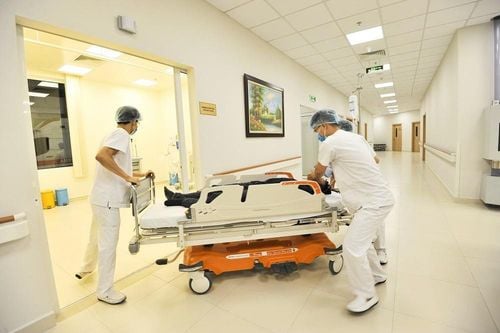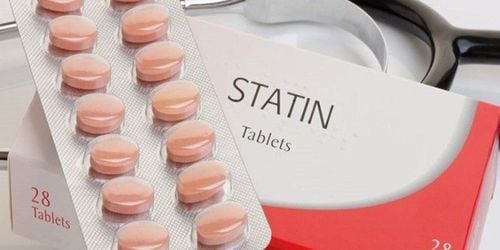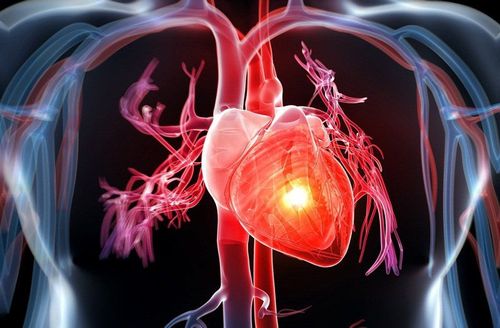This is an automatically translated article.
Posted by Doctor Nguyen Xuan Ninh - Emergency Resuscitation Department - Vinmec Central Park International General HospitalPacemaker placement is a treatment and also a procedure in cardiovascular emergencies. The placement of a pacemaker helps to generate electrical stimulation to the heart to treat bradycardia.
1. An outline of temporary pacemaker placement
Called "temporary" pacemaker placement because the pacemaker is for short-term use, it is used until the condition is resolved or until a long-term treatment is instituted present, for example, a permanent pacemaker.
Currently, there are many different modalities for transient pacing such as transesophageal pacing, percutaneous pacing, intravenous pacing,.... Intravenous transient pacing is a pressure method. Most commonly used in cardiology.
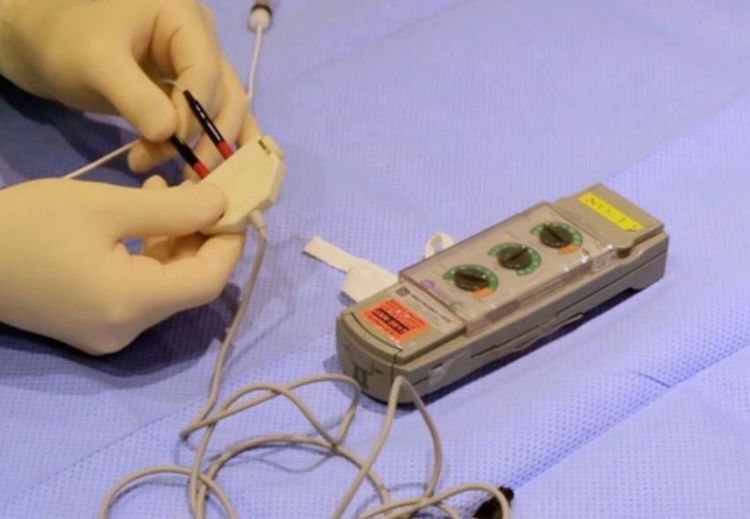
Máy tạo nhịp tạm thời (Nguồn hình: https://theprocedurescourse.com)
2. Indications and contraindications
2.1 Indications In some emergency situations, a doctor may have to temporarily put a pacemaker on a patient such as:
Symptoms of bradycardia (eg, fainting, hypotension) , chest pain,...) that does not improve with drug treatment. Some medical terms that doctors may use to refer to these bradyarrhythmias are:
Symptomatic sinus node failure Sinus arrest Sinus bradycardia Symptomatic atrioventricular block. Second degree atrioventricular block, Mobitz II. Third degree AV block. Drug overdose causes symptomatic bradyarrhythmias
In addition, in some cases, doctors may have to consider placing a temporary backup pacemaker for the patient, to prevent bad situations, can progress quickly, dangerous to the patient's life if the pacemaker is not placed in time. For example, there are some cases where there is a risk of arrhythmia in patients with myocardial infarction, myocarditis,...
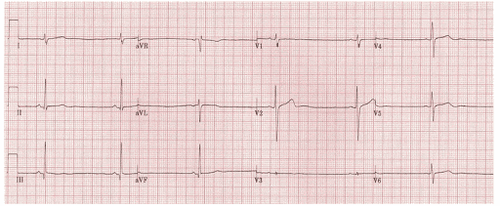
Nhịp chậm xoang trên hình ảnh điện tâm đồ của người bệnh
2.2 Contraindications In some situations, a temporary intravenous pacemaker cannot be performed such as:
Patients with coagulopathy, or drug-induced coagulation disorders Infection at venipuncture site There is a blood clot at the intended vein site.
3. How to perform a temporary intravenous pacemaker
Procedures need to be performed in a place where there are adequate emergency facilities. After the medical staff has fully prepared the equipment, the patient will be disinfected at the puncture site. The doctor will then spread sterile gauze to ensure all instruments are sterile. The doctor will choose the right vein for puncture. Usually the jugular vein (right internal jugular vein) or left shoulder vein (left subclavian vein). Occasionally, the doctor will puncture the left internal jugular vein, or the right subclavian vein, and more rarely, the femoral or brachial vein. After the vein is punctured, the doctor will insert the electrode wire into the heart chamber. Your doctor will connect a pacemaker electrode to a temporary pacemaker. Once the electrode wire is inserted into the heart, the doctor will monitor the ECG monitor to see when the wire is in the correct position. The correct position of the electrode tip is to adhere to the wall of the right ventricle. The doctor will set parameters for the temporary pacemaker such as intensity (output), sensitivity (sensitivity) and pacing frequency. The pacing frequency is usually set to 60-80 beats/min. After setting the appropriate parameters for the pacemaker, the doctor will conduct a post-installation check. The methods of checking after pacemaker placement are: chest x-ray, electrocardiogram, echocardiography showing electrodes in the right ventricle.
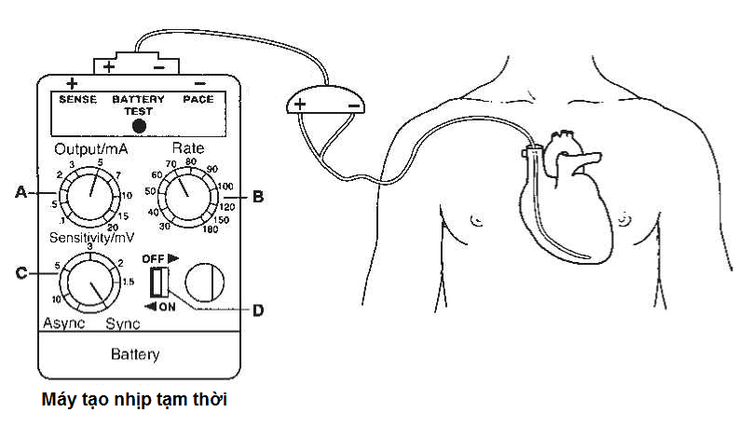
Đặt máy tạo nhịp tạm thời qua đường tĩnh mạch dưới đòn phải (Nguồn hình: https://www.dicardiology.com)
4. Complications of temporary pacemaker placement
Temporary pacemaker placement is a life-saving measure in an indicated cardiovascular emergency. However, the placement of a pacemaker also carries the risk of complications. Complications of temporary pacemaker placement depend on the stage of the procedure:
First is puncture: the patient is at risk of arterial puncture (causes hematoma, in severe cases can be creating a hematoma that compresses the airway), risk of being punctured to the lung (causing pneumothorax, hemothorax), risk of infection, risk of venous thrombosis, air embolism. When the electrode tip is inserted into the heart chamber: there is a risk of causing arrhythmia and worse, the patient is at risk of heart perforation causing pericardial hemoperitoneum, cardiac tamponade and even death.
To protect cardiovascular health in general and detect early signs of myocardial infarction and stroke, customers can sign up for Cardiovascular Screening Package - Basic Cardiovascular Examination of Vinmec International General Hospital . The examination package helps to detect cardiovascular problems at the earliest through tests and modern imaging methods. The package is for all ages, genders and is especially essential for people with risk factors for cardiovascular disease.
Customers can directly go to Vinmec Health system nationwide to visit or contact the hotline here for support.
References:
David L Hayes,Leonard I Ganz, et al, Temporary cardiac pacing, 2019, link https://www.uptodate.com/contents/temporary-cardiac-pacing Sullivan BL, Bartels K, Hamilton N Insertion and Management of Temporary Pacemakers. Semin Cardiothorac Vasc Anesth 2016; 20:52.






